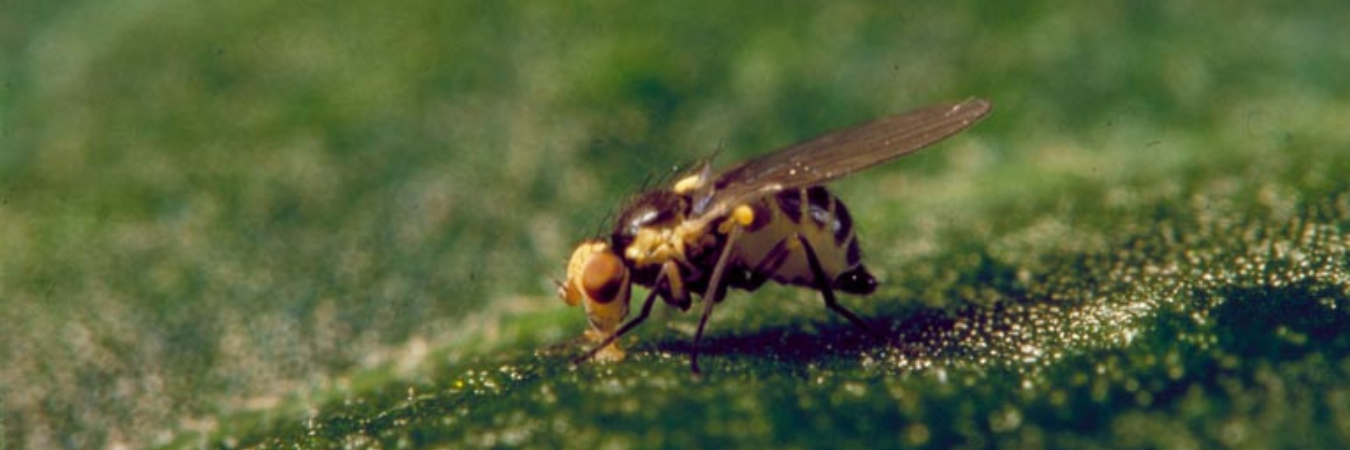Cover image: Adult of Liriomyza huidobrensis. National Plant Protection Organization, the Netherlands, Bugwood.org
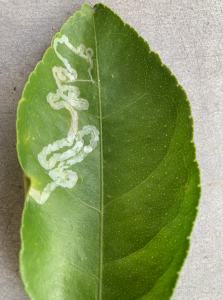 Have you ever wondered what causes the squiggly lines on the leaves of your fruit trees and vegetables? It’s more than likely damage caused by a leafminer. While there are many different leafminers in Australia, this article focuses on one not present in Victoria and one we want to keep out – the serpentine leafminer.
Have you ever wondered what causes the squiggly lines on the leaves of your fruit trees and vegetables? It’s more than likely damage caused by a leafminer. While there are many different leafminers in Australia, this article focuses on one not present in Victoria and one we want to keep out – the serpentine leafminer.
In late 2020, the serpentine leafminer (SLM; Liriomyza huidobrensis) was recorded in Australia for the first time. This attractive little black and yellow fly may appear harmless but is far from it. The serpentine leafminer has a wide host range of plant species that includes vegetables, cut flowers, and melons and its larvae have a significant impact on plant yields. SLM is native to South America and has subsequently spread to Europe, Asia, Africa, and the Middle East, where they have had a significant impact on crop yields. In addition to crops, they also have a negative impact on plant growth so it is important to keep them out of your backyard, and out of our production regions.
Unfortunately, following extensive surveillance activities undertaken by NSW and QLD governments, the pest was deemed unable to be eradicated from Australia. Helping us keep track of the current distribution of SLM will help Australia stay ahead of the curve and manage this pest to minimise its impacts.
Adult serpentine leafminer range from 1.3-2.3 mm in length, with black and yellow markings. The flies themselves may be hard to spot, but the leaf mines caused by larval feeding are very distinctive. Serpentine leafminer can be very difficult to distinguish from native leafminer species and usually require specialist diagnostics to confirm.
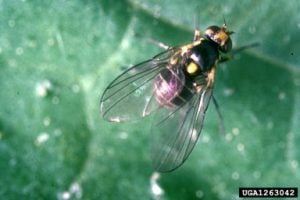
Figure 1. Adult. Central Science Laboratory, Harpenden , British Crown, Bugwood.org
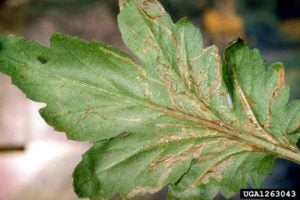
Figure 2. Typical symptoms of underleaf mining. National Plant Protection Organization, the Netherlands , Bugwood.org
Serpentine leafminer damage is primarily caused by larvae feeding inside the leaves. Typically, this feeding causes long, narrow, serpentine-shaped ‘mines’ which appear as white or grey lines on leaves which can be seen in figure 2. High levels of infestation affect the plant’s ability to photosynthesise, potentially reducing plant growth and crop yields.
Adult females can also create damage known as ‘stippling’ when feeding and laying eggs. These are small pale green to white circular spots scattered over the leaf surface. Stippling can increase secondary leaf infections, and can affect marketability for those selling their produce, especially for leafy vegetables.
The pest can only fly short distances; however, the eggs, larvae and pupae of SLM can be spread through the movement of plant material and soil or potting mix so they can quickly move through urban areas.
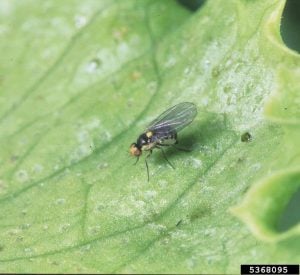
Figure 3. Adult. Merle Shepard, Gerald R.Carner, and P.A.C Ooi, Insects and their Natural Enemies Associated with Vegetables and Soybean in Southeast Asia, Bugwood.org
Community and growers alike must remain extremely vigilant of SLM, and report suspect sightings.
- Visual surveillance should focus on the damage created by the pest
- Inspect plants regularly for signs of unusual leafmining activity
- Look for potential damage on a wide range of plants, as well as in weeds
An important action is for those inspecting crops regularly to become familiar with what to look out for and to report suspected SLM activity.
If you think you have found serpentine leafminer (or any other unusual insect) in your garden, catch it in a container and report it through the MyPestGuide Reporter app making sure you choose My Pest Guide in the “Send report to:…” field. If you live in Victoria, your report will go directly to Agriculture Victoria’s team of entomologists.
Alternatively you can call and report to the Exotic Plant Pest Hotline on 1800 084 881.
Further Information
For more information, visit the following websites.

